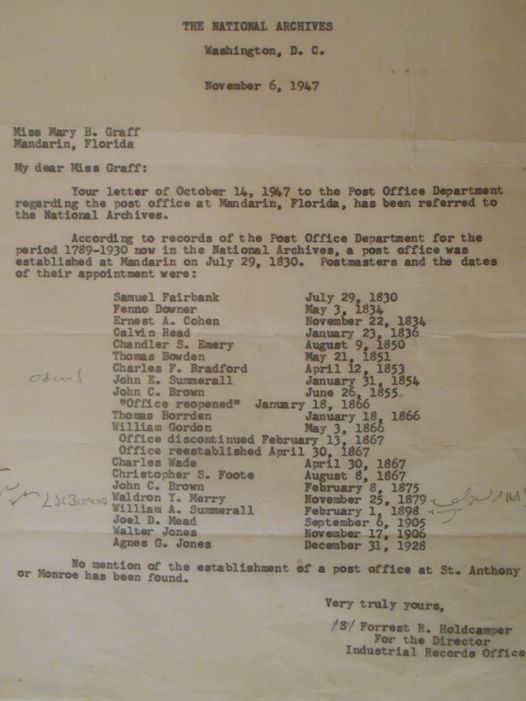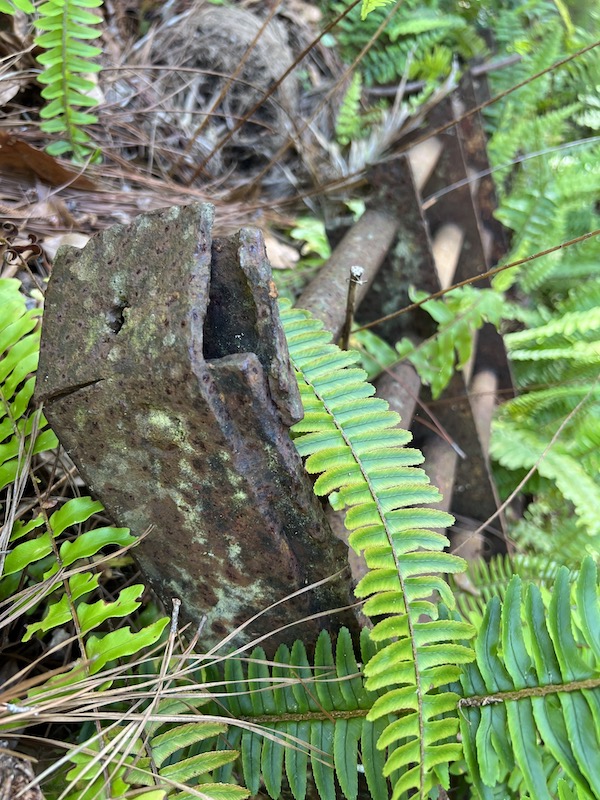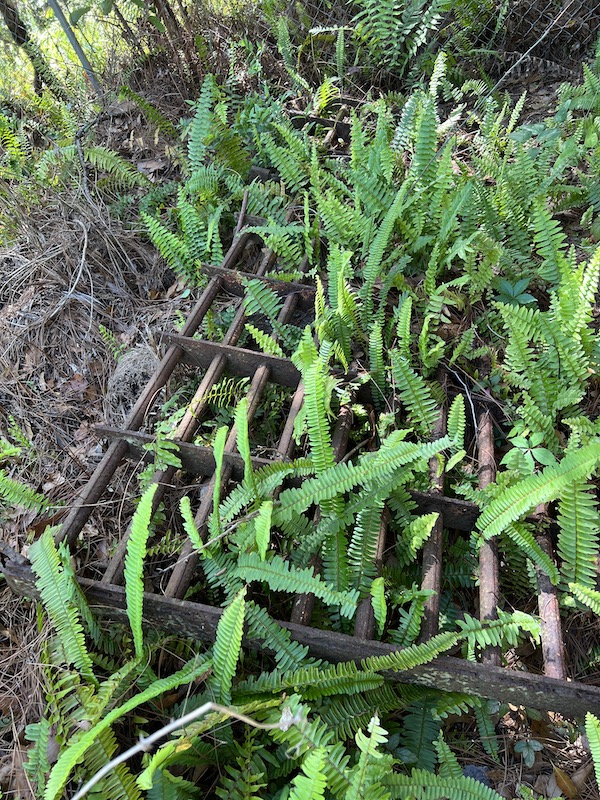Samuel Fairbank of Mandarin
Samuel Fairbank is listed on the 1830 Florida Census Mandarin , Florida. Samuel Fairbank was also the first postmaster of the Mandarin post office as confirmed by Mary Graff, author of the 1968 book, Mandarin on the St. Johns River. According to the Mandarin Museum Facebook page, Miss Graff wrote the National Archives in Washington, DC. Forrest R. Holdcamper returned a letter November 6, 1947 with the information of all of the postmasters for Mandarin.

Mary Graff Letter, Collection of the Mandarin Museum and Historical Society
Mandarin on the St. Johns River, as Ms. Graff called it was “established by the British in the 1760’s”, noted by Wikipedia. In 1830, Calvin Reed, named the area Mandarin because of the citrus industry in the area. It is interesting to note that in 1821 Florida was a Territory and divided by the Suwanee River into two separate counties; East and West Florida. St. Johns County, also known as East Florida and Escambia County, also known as West Florida.
Duval County was created in 1822 from St. Johns County and named for William Pope DuVal, the territorial Governor from 1822-1834. The area of DuVal at the time was from the Suwannee River stretching all of the way east to the Atlantic Ocean bounded by the St. Johns River. More divisions were made to accommodate Nassau county, in 1824 and Clay county in 1858. Jacksonville consolidated on October 1, 1968. “Atlantic Beach, Baldwin, Jacksonville Beach and Neptune Beach maintain their own municipal governments.”(North Shepherd Moss, Genealogy Trails, Duval County History).
There is a George R. Fairbanks of New York who settled in St. Augustine in 1842, twelve years after Samuel Fairbank was postmaster of Mandarin’s postoffice. George became an attorney, historian, author and politician but it does not appear he was related to Samuel Fairbank.
According to genealogy Trails, which seems to have taken information from the early microfiche and documents, the first census in the Mandarin area was taken in 1830’s. Based on the information gathered, the two race population was 1,336 which included all of St. Johns County. By 1860, Genealogy Trails indicated the Federal Census has all of St. Johns County with 1,953 people.
Samuel Fairbank is listed in this survey as living in St. Johns which in his case became “Duval”. Under the leadership of Governor John Branch, Florida became a state on March 3, 1845 with William D. Moseley elected as the first Governor and David Levy Yulee, U.S. Senator.
Fairbanks Road in Mandarin is said to have been a dirt road stretching all fo the way to the King’s Road that ran East and West parallel to the coast of Florida.
In the Mandarin area, there is a Fairbanks Road, Fairbanks Forest Dr., Fairbanks Grant Road W, Fairbanks Grant Road N.
See you tomorrow.
Nan
Sources: Genealogy Trails, 1830 Florida Census, History of Duval County, Mandarin Museum and Historical society, Mary Graff, Wikipedia.
This information including Ramey photos may be used with credit to Ramey Collection. Photos may be 3rd party for which may be secured by copyrighted owner.
If you believe you are a copyright owner or can help with information regarding this article, including to clarify rights or information issues, please contact me. We are willing to remove any item from public view if there is any concern regarding ownership.


